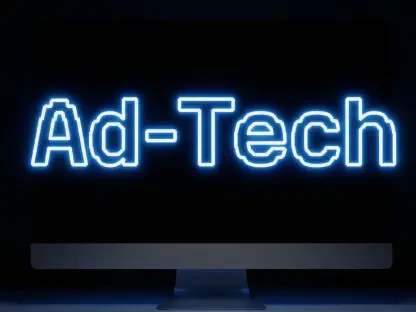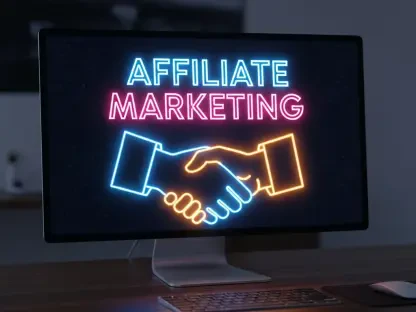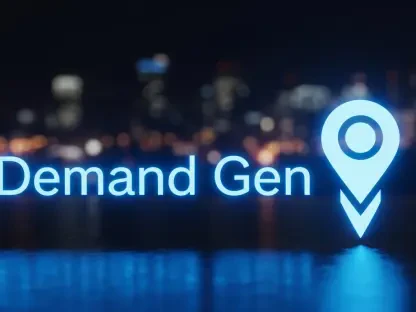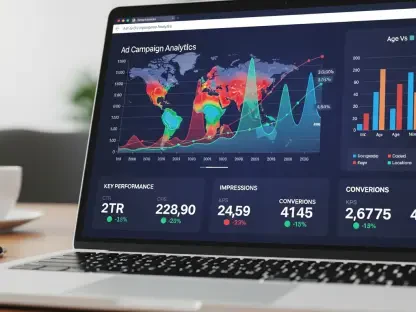Anastasia Braitsik, recognized globally for her expertise in SEO, content marketing, and data analytics, reveals the strategy and innovation behind TripleLift’s impressive performance on Prime Day 2025. Throughout our conversation, Anastasia illuminates the factors contributing to their significant growth, including the effective use of multi-format advertising, strategic audience targeting, and vital partnerships that facilitated this milestone.
Can you explain the key factors that contributed to TripleLift’s 10x growth in advertiser spend during Prime Day 2025?
The 10x growth we saw was a result of several strategic elements coming together. At the core was our comprehensive multi-format advertising approach. This allowed us to cater to a variety of touchpoints in the consumer journey, appealing to both endemic and non-endemic advertisers. We also harnessed our partnership with Amazon, which provided an extensive data reservoir for targeting, allowing us to blend our capabilities with Amazon’s consumer insights effectively. Moreover, our team’s collaboration with partners and clients helped optimize campaigns, contributing to a successful Prime Day.
How did the multi-format advertising approach play a role in achieving this growth?
Our multi-format approach was crucial for handling diverse marketing needs, supporting full-funnel strategies that focus on every stage, from awareness to conversion. By offering formats like display, video, and native advertising, we could effectively engage consumers at different points in their shopping journey and accommodate different advertising goals, from brand awareness to direct response. This versatility allowed us to increase both reach and engagement significantly.
Can you elaborate on the role of TripleLift’s Native REC format in the success of the campaign?
The Native REC format played a substantial role by meeting the rising demand for native advertising solutions. This format integrates seamlessly with content, providing a less intrusive yet engaging experience. By appearing as recommended content, it performed well with consumers—garnering higher engagement rates than traditional advertising. This ability to maintain performance metrics while ensuring a smooth user experience was pivotal to our campaign’s success.
How does the Native REC format address the demand for native advertising solutions?
This format specifically caters to consumer trends favoring subtler advertising experiences that do not disrupt content consumption. As native advertising grows in popularity, particularly on publisher sites, the Native REC format meets these expectations by aligning ads naturally within editorial flows. This aligns with our strategy to deliver effective, non-intrusive advertising that still drives engagement and performance.
What role did display, video, and connected television (CTV) advertising formats play in the campaign’s overall performance?
These formats were instrumental in ensuring our campaigns reached broad and varied audiences across different engagement points. Display advertising reinforced brand presence across premium inventories, maintaining visibility and relevance. Video formats captured consumer attention during high-engagement moments, while CTV extended our reach into living rooms where significant purchasing decisions are made. The synergy among these formats allowed us to maximize both reach and engagement, enhancing overall campaign performance.
How did TripleLift Audiences (TLA) contribute to expanding reach beyond traditional targeting methods?
TLA was critical in broadening our campaign’s scope beyond conventional targets. By integrating first-party data from our publisher partners, we crafted rich consumer profiles that enhanced precision in audience identification and targeting. This approach allowed us to leverage cookieless targeting solutions which respect privacy while maintaining efficiency, giving us a clear edge in reaching incremental audiences effectively.
Can you explain the significance of first-party data integration for audience targeting?
First-party data is vital because it offers precise, reliable insights directly from the consumer interactions on various platforms. This direct channel of data enables more accurate targeting and personalization, addressing privacy concerns often tied to third-party data. By integrating this data with our targeting capabilities, we enhanced our ability to serve ads that align closely with consumer needs and intents, increasing the likelihood of engagement and conversions.
How has the collaboration with Amazon supported TripleLift’s success during Prime Day?
Our partnership with Amazon was instrumental, primarily by facilitating seamless integration with its vast customer data and premium inventory access. This collaboration ensured that we could tap into unique insights and reach consumers with high purchasing intent. Moreover, the cooperative ecosystem allowed for quick optimizations and adjustments during the campaign, enhancing our agility and effectiveness during this high-stakes period.
Can you describe how endemic and non-endemic advertisers benefited from the platform during Prime Day?
Endemic advertisers benefited by driving direct sales and product visibility, leveraging heightened shopping intent on Amazon. On the other hand, non-endemic brands used the opportunity to boost awareness and build consideration in a highly engaged environment. Both types of advertisers utilized our platform’s capabilities to address their specific goals, whether that was immediate sales or longer-term brand building.
What are the differences between endemic and non-endemic advertisers in terms of their objectives on the platform?
Endemic advertisers are often focused on boosting immediate product sales and visibility, heavily leveraging direct purchase intent linked with retail events like Prime Day. Conversely, non-endemic advertisers, typically not selling directly through the platform, focus more on awareness and consideration, using the heightened attention to improve brand positioning and engage with potential new customers.
How does the Lead-Out phase contribute to additional advertising opportunities post-Prime Day?
The Lead-Out phase extends the temporal reach of Prime Day by capitalizing on continued consumer interest and lingering purchase intents. It tends to be overlooked but offers ripe opportunities for conversions as consumers finalize decisions initiated during the main event. Advertisers who remain active during this phase can capture additional sales from ongoing consumer research and engagement activities.
What strategies are essential for advertisers to capitalize on the Lead-Out phase effectively?
To leverage the Lead-Out phase, advertisers should focus on sustained campaign optimization and precise budget allocation. Continued presence and strategic messaging, aligned with the insights gained during the main event, can help capture consumers still deciding. Targeted communication and maintaining visibility using diverse formats ensure these opportunities are maximized.
How does TripleLift’s multi-format approach support full-funnel marketing strategies?
Our approach is pivotal for executing comprehensive full-funnel campaigns. By offering diverse formats—like display, video, and native—we support marketers in addressing every stage of the consumer journey. This flexibility ensures we can engage audiences initially through awareness, nurture through consideration, and finally, drive conversions effectively, adapting for specific needs and goals across different verticals.
Can you describe the role of collaboration between teams, clients, and partners in campaign optimization?
Collaboration was central to our success, enhancing campaign setups and performance. Close coordination allowed us to implement best practices rapidly and ensure that campaign goals were met efficiently. This included fine-tuning audience segmentation, creative assets, and budget strategies and facilitating real-time optimizations to adapt dynamically to emerging insights and performance metrics.
What specific optimization strategies were implemented to improve campaign performance?
We focused on optimizing creative assets and strategically segmenting audiences to target them effectively. Budget allocations were fine-tuned based on performance analytics to maximize outcomes. Real-time adjustments during the campaign allowed us to adapt to changing dynamics quickly, ensuring that our strategies remained aligned with evolving consumer behaviors and marketing objectives.
How did market trends in retail media impact TripleLift’s performance during Prime Day?
The expansion of retail media networks and a shift toward commerce-focused platforms influenced our strategies heavily. These trends have led to increased advertiser investment and interest. Our ability to offer comprehensive solutions, including native and multi-format options, positioned us favorably to tap into these evolving trends, reflecting the broader industry shift toward integrated, commerce-adjacent advertising methods.
How does TripleLift’s approach to premium supply partnerships ensure brand safety and scale objectives?
By emphasizing quality over sheer volume, our partnerships prioritized premium inventory, ensuring that ads were placed in brand-safe, high-quality environments. This focus not only maintained brand safety standards but also supported scale objectives, allowing us to reach a broad audience across trusted platforms and enhancing overall campaign credibility and effectiveness.
What advantages does connected television advertising bring to retail media contexts?
CTV offers unparalleled access to living room environments where critical shopping decisions are made, blending the broad reach of traditional TV with digital precision. Its integration with commerce data allows for sophisticated targeting and personalization unique to digital environments, providing substantial returns for retail media by enabling nuanced engagement strategies.
How does TripleLift’s positioning within the retail media landscape differ from performance-focused platforms?
Our differentiated emphasis on premium inventory and native advertising offers a unique proposition compared to solely performance-focused platforms. By addressing comprehensive marketing needs with multi-format capabilities, we provide advertisers with an integrated solution that simplifies managing vendor relationships and technology stacks, catering to both performance and broader branding goals.
How will the trends in retail media network expansions affect advertisers in the future?
Retail media network expansions will likely drive further shift in advertisers’ budget allocations toward commerce-centric platforms. This evolution lets advertisers more effectively align their strategies with consumer purchase behaviors. As these networks grow, platforms like ours, which offer rich consumer insights and premium inventory through strategic data partnerships, will be better positioned to meet complex advertising needs.
Would you like to share any advice for our readers?
Certainly. As retail media continues to evolve, it’s crucial for marketers to remain agile. This means staying informed on emerging trends, investing in data-driven strategies, and fostering strong relationships with industry partners. The key is to balance short-term performance priorities with long-term brand-building initiatives to achieve sustained success.









